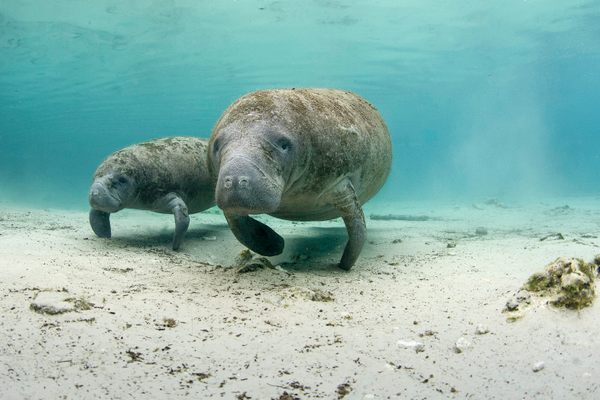The Deep Sea Diving Suit That Could Change What We Know about the Ocean
The Exosuit (courtesy Nuytco Research, Ltd)
The depths of the ocean still remain one of our planet’s great mysteries, despite our world mostly being water. A new atmospheric diving suit — the Exosuit — is allowing humans to descend into the sea further than we’ve ever gone before, perhaps changing what we know of life on Earth.
The suit created by Nuytco Research, Ltd. looks a bit like if an early diving bell-style suit — such as that from 1882 by the Carmagnolle brothers, on display at the Musée de la Marine in Paris — was crossed with the ASIMO robot. This week it made a special stop this week at the American Museum of Natural History which culminated in a discussion with researchers John Sparks, curator at the AMNH; David Gruber, research associate at CUNY; and Vincent Pieribone, research associate at the Pierce Laboratory-Yale. They noted that this was the first time an ADS system was being deployed for scientific research since the 1980s.
The suit is constructed from aluminum alloy, weighs in at 530 pounds, is entered through the torso, can contort at several rotorary joints, and even has curious little foot pads that have pressure sensitivity — of which there is quite a bit, some 30 times that on the surface, at the 1,000 foot depth to which a human inside can safely reach. What makes it even more advanced is that it has 50 hours of life support, meaning researchers can actually spend time viewing marine life at that depth. And what they are looking for is bioluminescence.

A test of the Exosuit is planned for July of 2014 on the Stephen J. Barlow Bluewater Expedition off the coast of Massachusetts. The team has already discovered eels and sharks and other creatures with unexpected bioluminescence and biofluorescence in a previous expedition. But why does it matter that there are these little glowing creatures far beneath the waves? While every bit of our world that we understand more changes in some way our greater picture of life, bioluminescence research has already had great impact in medical research, particularly with cancer where bioluminescence imaging has revealed cell activity that was previously invisible. What next we can discover in nature may break through another barrier with this innovation in technology.
The Exosuit at the American Museum of Natural History (photograph by the author)
The Exosuit at the American Museum of Natural History (photograph by the author)
The Exosuit in cardboard at the American Museum of Natural History (photograph by the author)








Follow us on Twitter to get the latest on the world's hidden wonders.
Like us on Facebook to get the latest on the world's hidden wonders.
Follow us on Twitter Like us on Facebook